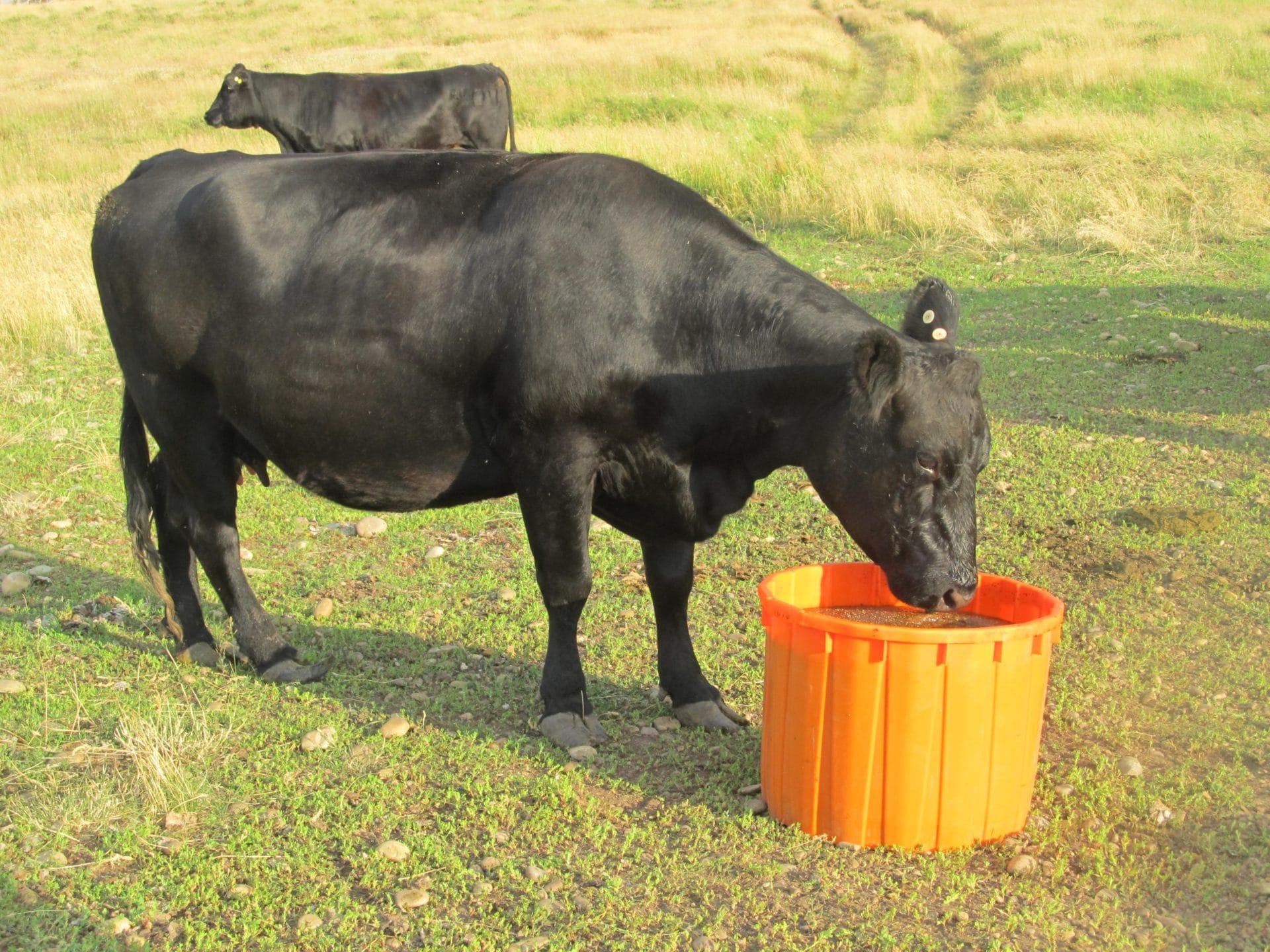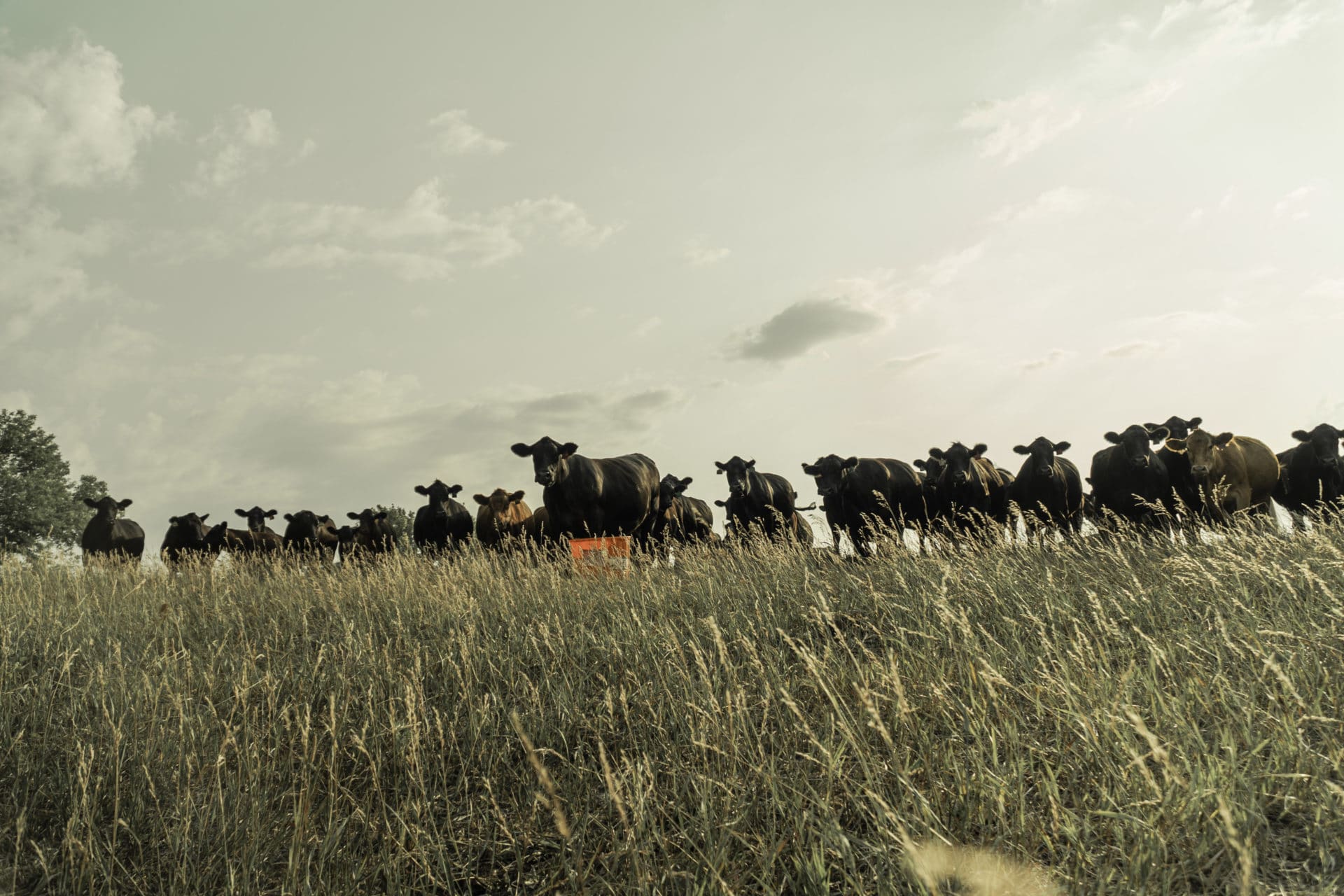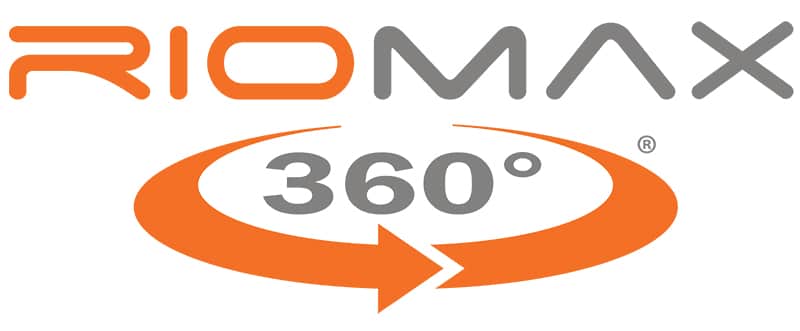Last updated on October 2nd, 2023 at 02:09 pm
Without sufficient nutrition, the immune system can’t do what it’s supposed to do.
“Until death do us part.” No, we’re not talking about wedding nuptials. We’re talking about the relationship between nutrition and the health of your cattle. “They’re dependent on each other,” says Dr. Peter Franzky. “One will not work without the other.”
Franzky is a consulting cattle nutritionist and a livestock producer from west-central Minnesota. In addition to his work as a consulting nutritionist, he was involved in developing the unique formula in Riomax® supplements.
Here’s why Franzky says that cattle health and nutrition are wedded so closely. In a ruminant animal like a cow, the bacteria and enzymes in the rumen are what digests the feed.
Feed Breakdown Starts in the Rumen
The rumen microflora break down the feed the cow eats and ultimately turn it into soluble nutrients that end up in the small intestine. There, those nutrients permeate the intestinal cell wall and enter the bloodstream where they can be distributed to the areas of the body where they’re needed.
In short, we are what we eat. “And that statement is true for everything in life,” Franzky says. Specific to cattle, “The amount of nutrients that end up in the soluble, usable form in the bloodstream determines the efficiency and wellbeing of that animal.”
The nutrients in the feed a cow eats are first used for maintenance—keeping the animal alive. “So whatever is not used by the body for maintenance, over and above what is left from the nutrient source in the bloodstream, goes to reproduction or production, either daily gain or milk production,” he says.
“And if there are any nutrients left over and above maintenance, production and reproduction, then it goes finally to assist the animal’s health and wellbeing through the immune system.”
How the Digestive System Directly Relates to Cattle Health
The immune system isn’t an organ, like the liver, kidneys or lymph nodes. Those are certainly important, but it’s the digestive system and how well it does or doesn’t work that ultimately affects cattle health.
“The number one limiting factor in any animal in production is the capability for optimum dry matter feed intake,” Franzky says. “And when dry matter feed intake is limited for whatever reason—because of poor quality feeds, weather conditions, age of the animal—that we cannot provide enough nutrients over and above maintenance, production and reproduction—it’s the immune system that gets shorted.” That’s why undernourished cattle are far more susceptible to a disease challenge than animals that are on a proper plane of nutrition.
“Nutrition plays a key role in vaccine response and immunity in cattle,” according to Lee Jones, DVM, assistant professor and clinical veterinarian with the University of Georgia’s Investigative and Diagnostic Laboratory in Tifton, Ga. That’s because the immune system uses a lot of nutrients as it responds to a vaccination challenge—minerals, vitamins, protein and energy.
When it comes to mounting an immune response to a vaccine or disease challenge, minerals are particularly important. Researchers at the University of Georgia, Athens saw a large difference in vaccine response in calves supplemented with trace minerals versus those that weren’t.
Bottom line: without sufficient fuel, the organs can’t do what they’re supposed to do as well as they’re supposed to do it.

Don't Forget, Cattle Genetics Make a Difference Too
Then there’s the remarkable genetic gains made in cattle over the last 40 to 50 years. While that has increased production efficiency, it has a negative trade-off.
“We have bred in a tremendous amount of stress as a byproduct of genetic improvement for phenomenal performance,” he says. “What we have to remember is that the nutrient demand from high genetic cattle is many times what it used to be. And therefore, it requires a larger quantity of nutrients” to support the maintenance, production, reproduction and ultimately health of the animal.
Cattle Mineral Makeup
Not only do minerals play a key role in animal health, the chemical makeup of the mineral supplement makes a difference. That’s because inorganic minerals, anything with an oxide or carbonate tacked on to the name, are broken down in the rumen where they bind with antagonistic minerals that are too large to pass through the cell wall in the small intestine.
Organic or chelated and crystalline mineral forms are rumen bypass compounds that pass through the rumen unaffected. Then, when they move to the small intestine, they are separated and the mineral is more readily absorbed into the bloodstream.
“So we have phenomenal technology now to produce trace minerals that are 2-3.5 times more available than we used to have 50 years ago,” Franzky says. “And we utilize those technologies in our feed ingredients for our Riomax® products in sound and balanced optimum amounts.”
Here’s why that’s important. “Where my cattle are with their circulating mineral status really influences whether or not my cattle respond to a vaccine,” Jones says. “So circulating minerals matter and it’s important that we supplement our cattle appropriately.”
Improving Immune Response to Fight Cow/Calf Sickness
Josh Blauhorn will attest to that. He, along with his dad Bill and brother James, operate the Lazy B Ranch near Palmer, Neb. Back in 2020, they reached out to their local feed dealer to put another set of eyes on their cattle, which weren’t keeping condition very well. “We wanted them in better shape going into calving, which starts in March,” Josh recalls.
Their feed dealer, Glen Killion, confirmed the cows were fairly thin for pre-calving. “We thought they needed more protein, but Glen talked more about overall herd health on a deeper level. He mentioned we needed to look at mineral that was more fortified and showed us Riomax®.”
Their cows were on corn stalks and the Blauhorns put out Riomax® tubs two weeks prior to calving. Bill was skeptical and put half of his cows on Riomax® and left the other half on their previous mineral program.
Killion met with James a couple of weeks after calving started. James commented that he couldn’t believe how good the cows looked already. Meanwhile, Killion was thinking they still had a bit to go.
“By April 1, about halfway through calving, I realized we hadn’t treated anything for coccidiosis or enterotoxaemia, nor did James,” Josh says. “Typically, we’ve had a terrible outbreak by now. Dad’s group, without Riomax®, had several calves treated…a few even died.”

A Cattle Mineral Pack With Yeast & MOS to Combat Bad Bacteria
Because Riomax® delivers rumen bypass cattle minerals to the animal, more of the minerals important in immune function go where they’re supposed to go. With a more robust immune system, cattle are better able to respond to vaccines and fight off disease challenges.
Beyond that, the Riomax® formula contains MOS and a four-pack of yeast products. MOS, or mannan oligosaccharides, are prebiotics composed of complex carbohydrate molecules. It helps build gut integrity and reduce pathogenic bacteria while enhancing the good digestive aiding bacteria. A multi-component yeast package cuts a wider swath than a single yeast strain by itself. Combined, the Riomune® product ties up and flushes out bad bacteria and serves to boost immune response.
Not only does the Riomune® product tie up and flush out bacteria such as E. coli and Salmonella, it helps reduce parasitic attachments in the gut wall, like coccidia. A healthier and nutritionally balanced and pH stable digestive environment is also less favorable for internal parasites.
Beyond the more biologically available minerals, Riomax® delivers a digestion boost via direct-fed microbials, enzymes and prebiotics that speed up the digestive process, Franzky says. “We have digestive enzymes to help digest fat, carbohydrates and fiber more efficiently.” That gives the animal more oomph to squeeze more nutrients out of the feed it consumes.
Typically, that results in a 15% to 30% nutrient sparing effect. “And when we spare nutrients that would otherwise come out the tail pipe of that animal undigested, then we get improved productivity,” Franzky says. “And that relates to better health over and above better daily gain or better milk production or better reproductive performance.”
Ranch Economics: It's Gotta Pencil
Riomax® customers also testify and report significant reduction in morbidity, mortality and less antibiotic use with healthier cattle, Franzky says.
“This is a win-win economic situation to improve the producer’s bottom line as a result of most optimum available and balanced nutrition with the Riomax® products line when used correctly.”




